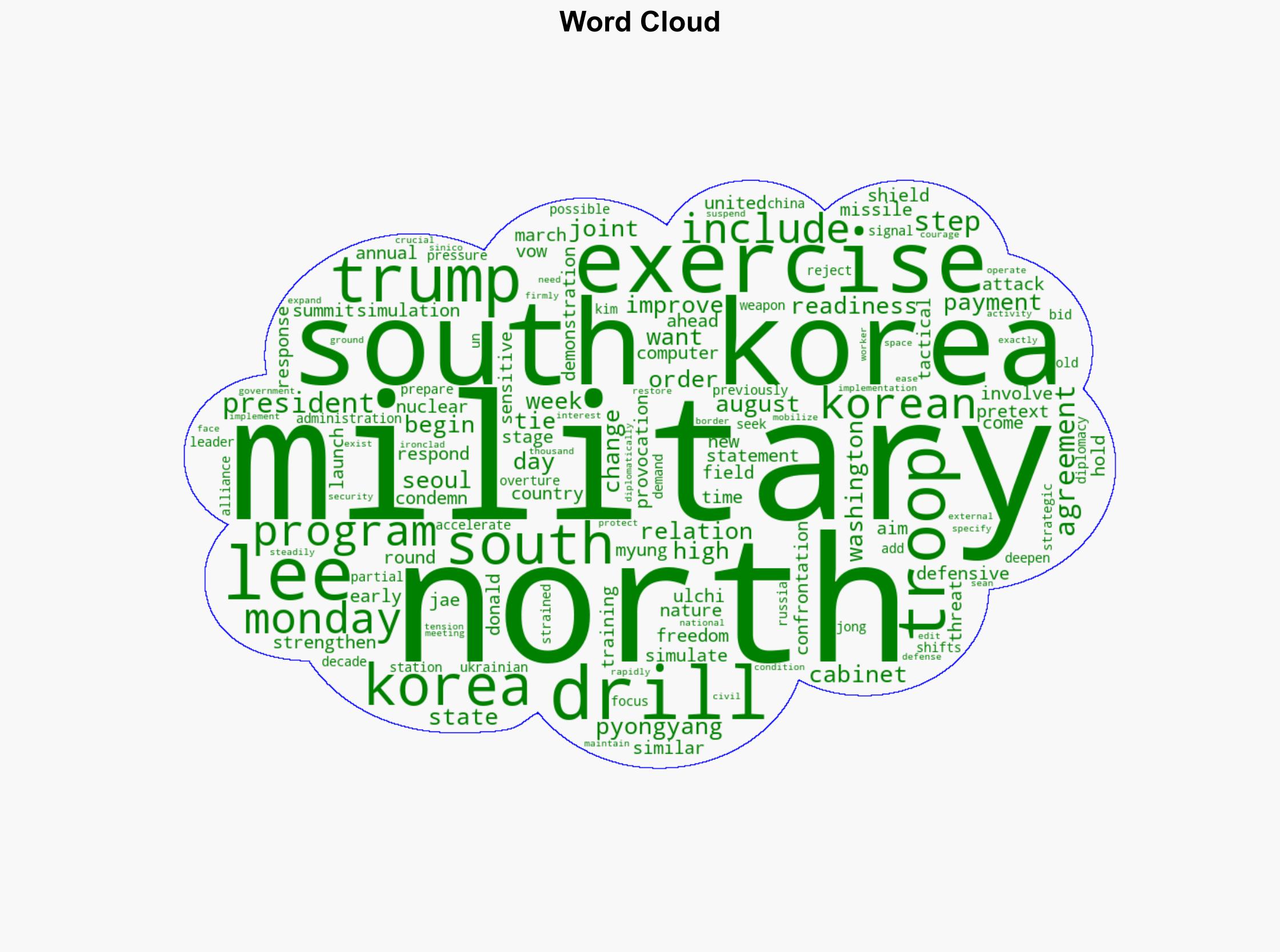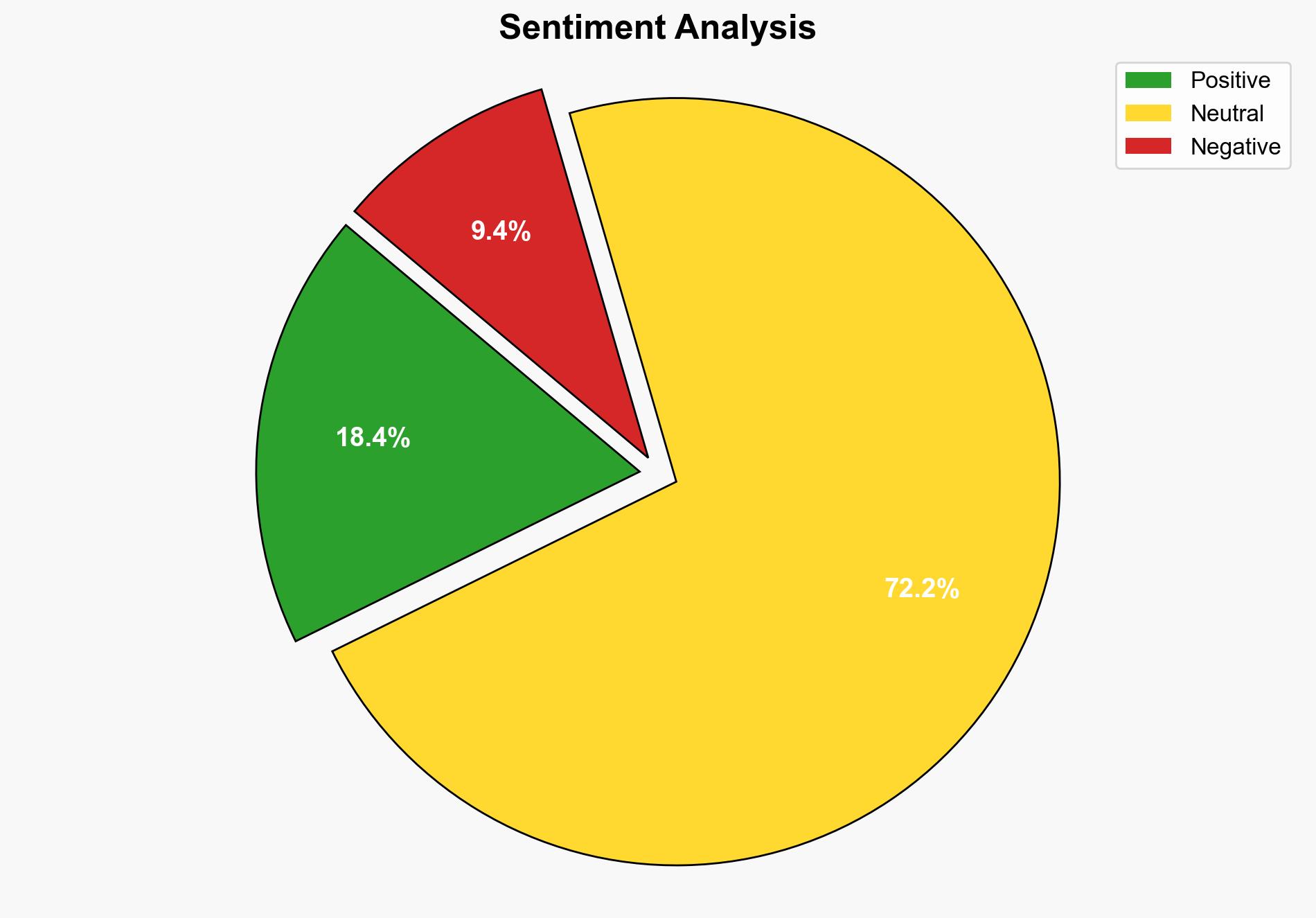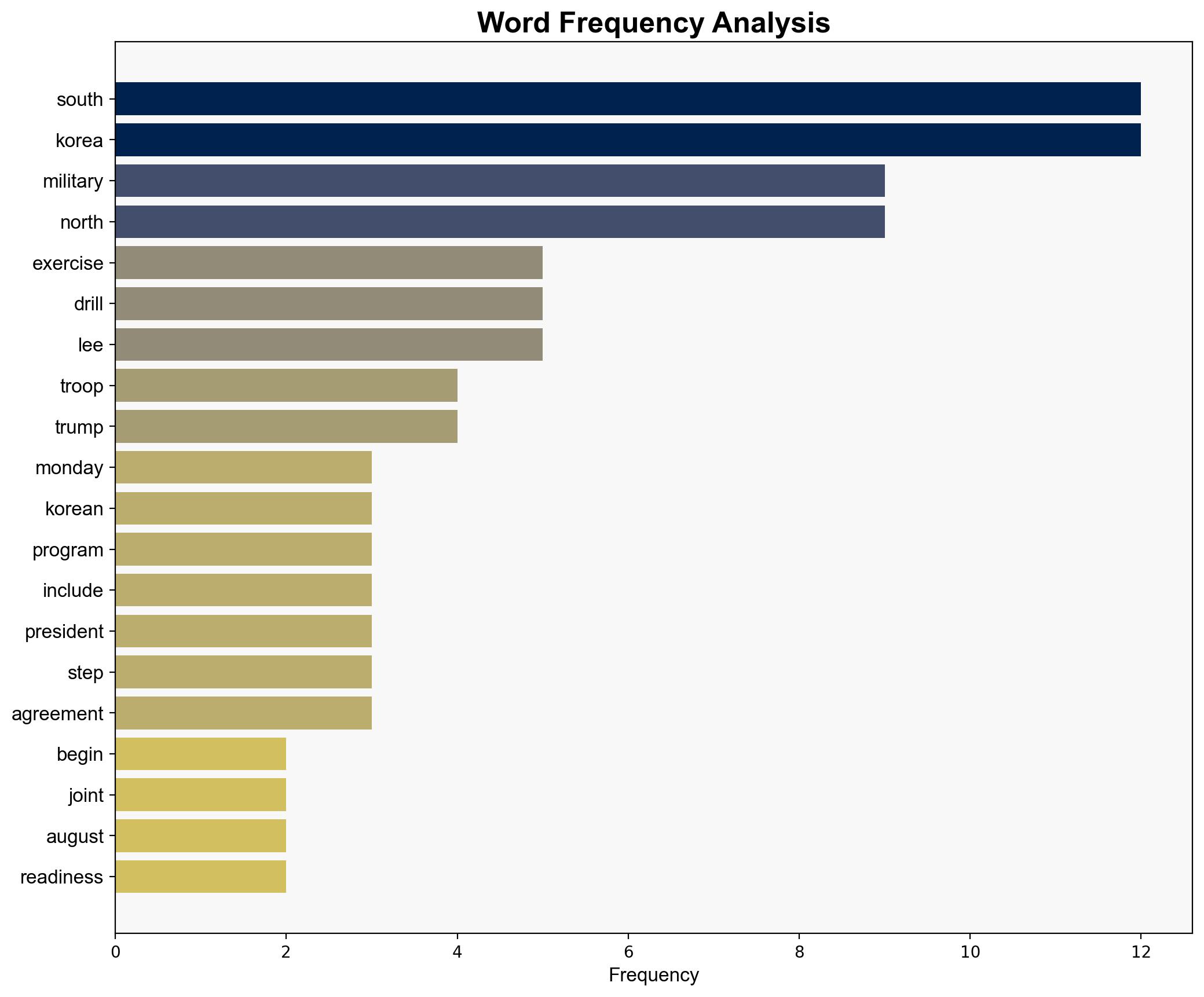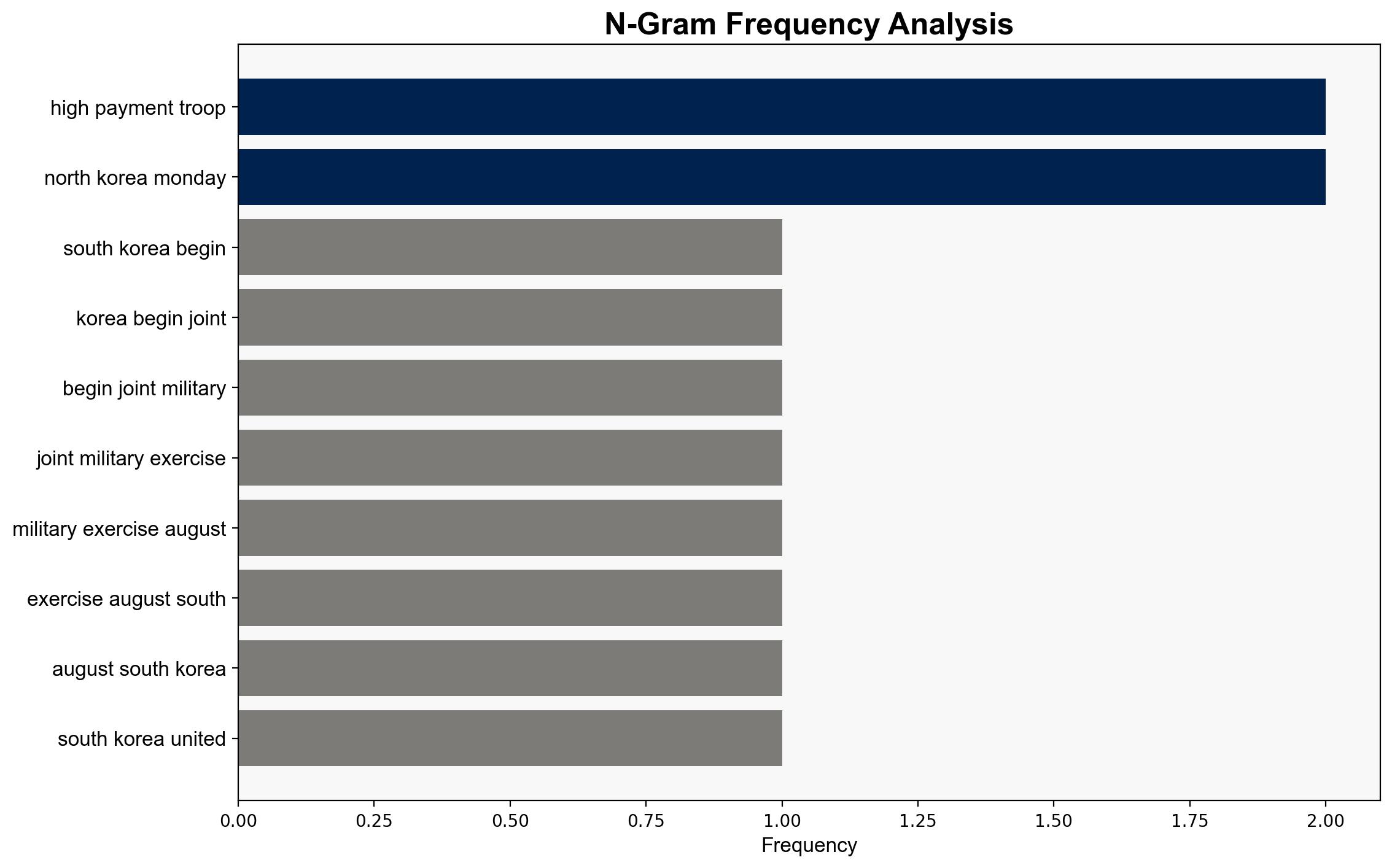South Korea US begin joint military exercises – DW (English)
Published on: 2025-08-18
Intelligence Report: South Korea US begin joint military exercises – DW (English)
1. BLUF (Bottom Line Up Front)
The most supported hypothesis is that the joint military exercises between South Korea and the United States are primarily defensive and aimed at deterring North Korean aggression. This assessment is supported by the nature of the exercises and historical context. Confidence level: Moderate. Recommended action: Continue diplomatic engagement with North Korea while maintaining military readiness.
2. Competing Hypotheses
1. **Hypothesis A**: The joint military exercises are a defensive measure designed to enhance readiness against potential North Korean aggression. This is supported by the exercises’ defensive nature and the historical pattern of such drills.
2. **Hypothesis B**: The exercises are a strategic maneuver by the United States to exert pressure on North Korea and China, signaling a shift in regional power dynamics. This is suggested by the timing of the exercises and the broader geopolitical context involving the U.S. strategic focus on China.
Using ACH 2.0, Hypothesis A is better supported due to the explicit defensive nature of the exercises and the historical precedent of similar drills. Hypothesis B, while plausible, lacks direct evidence linking the exercises to broader strategic shifts.
3. Key Assumptions and Red Flags
– **Assumptions**: The exercises are assumed to be purely defensive. There is an assumption that North Korea’s responses are primarily rhetorical.
– **Red Flags**: Potential cognitive bias in underestimating North Korea’s capacity for unexpected military actions. The lack of explicit statements from the U.S. regarding strategic intentions towards China could indicate a blind spot.
4. Implications and Strategic Risks
– **Geopolitical Risks**: Increased military tensions on the Korean Peninsula could lead to accidental escalation. North Korea’s potential military responses could destabilize the region.
– **Economic Implications**: Heightened tensions may impact regional markets and trade, particularly if military actions disrupt key shipping routes.
– **Cybersecurity Threats**: North Korea may engage in cyber operations as a form of asymmetric warfare in response to the exercises.
5. Recommendations and Outlook
- Enhance diplomatic channels with North Korea to reduce the risk of miscalculation and promote dialogue.
- Strengthen cybersecurity defenses in anticipation of potential North Korean cyber activities.
- Scenario Projections:
– **Best Case**: North Korea engages in diplomatic talks, reducing regional tensions.
– **Worst Case**: Military confrontation occurs, leading to regional instability.
– **Most Likely**: Continued military posturing by North Korea without significant escalation.
6. Key Individuals and Entities
– Lee Jae-myung
– Donald Trump
– Kim Jong-un
7. Thematic Tags
national security threats, cybersecurity, regional focus, military strategy





